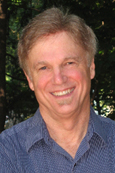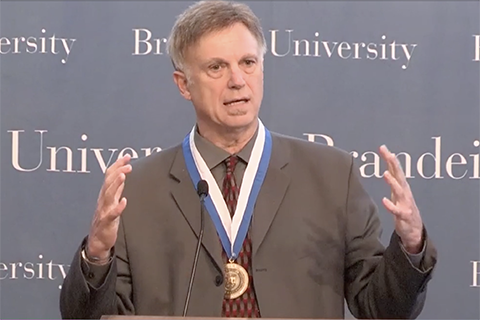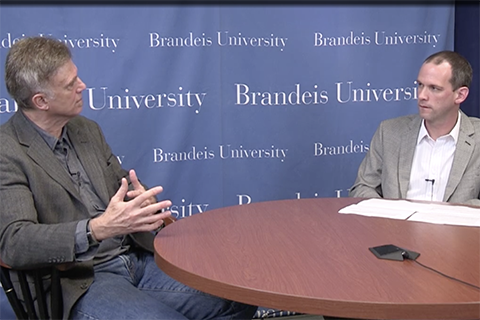Doug McAdam
 2012 Recipient
2012 Recipient
Doug McAdam, a scholar who has made the study of social movements and other forms of "contentious politics" the focus of his research, has been chosen to receive the fourth annual Joseph B. and Toby Gittler Prize for lasting and outstanding contributions to racial, ethnic and religious relations.
A professor of sociology and director of urban studies at Stanford University, McAdam is the author of two books on the civil rights movement including "Freedom Summer," which was a follow-up study of the lives of those who applied to take part in the 1964 Mississippi Summer project, 20 years later.
More recently, he has sought to assess the ongoing civic effect of participation in Teach for America, the relationship between neighborhood religious and civic life in Chicago, and to explain county level variation in the burning of churches in the United States between 1996 and 2001. His findings often have been unexpected.
Brandeis President Fred Lawrence, chairman of the Gittler Prize selection committee, said McAdam was a particularly fitting honoree because his strong commitment to social justice is imbedded in his deep commitment to integrity in scholarship.
"The struggle for racial and social justice is long and complex," Lawrence said, "and requires the work of scholars and researchers unwaveringly committed to the search for truth. Doug McAdam's work places him in the top tier of such scholars. This is precisely what the Gittler prize was designed to honor."
McAdam delivered a lecture on "The Continuing Significance of Race in America's Politics of Inequality" and received the medal and $25,000 award that accompanies the Gittler prize on Nov. 15 in Rapaporte Treasure Hall.
Freedom Summer was a campaign in Mississippi organized by the Student Non-Violent Coordinating Committee, a group of young Black activists, to register Black voters and support the civil rights movement. Some 1,000 volunteers, many of them white, northern college students participated, braving hostile police, Ku Klux Klansmen, bullets and bombs. Four died and hundreds were wounded.
McAdam's research showed that the experience affected the volunteers profoundly, to the extent that decades later many of them remained deeply involved in justice and freedom movements that continued to change the social and political landscapes of America. Volunteers who were accepted for Freedom Summer work but did not go through the experience, he found, were generally conventional liberals in later life.
Those findings led Teach for America founder Wendy Kopp to invite McAdam to do similar research on TFA "graduates" in the expectation that his findings would be similar for those who took part in TFA. They were not.
In a recent telephone interview, McAdam said that "we found that TFA's 'graduates' are no more likely to be engaged in public service than the two other groups studied" — volunteers who were accepted but did not enter the program and people who did enter the program but dropped out. "In fact, members of the first of those groups are consistently more civically engaged in the present than TFA graduates."
Perhaps even more surprising is McAdam's analysis, in collaboration with Rob Sampson, a professor of sociology at Harvard University, of civic and religious life in the neighborhoods of Chicago. Contrary to general expectations, the researchers found that religiosity and civic activism are inversely related.
"We show that no matter how you measure religious activity, the more of it there is, the less civic activity there is," McAdam said. "The more civic organizations, the more civic engagement. The density of churches has the opposite effect."
McAdam also researched the outbreak of church burnings that began in the United States in the spring of 1996.
"The media jumped all over it, and framed it from the beginning as burning of Black churches — a 'back to the bad old days' story," McAdam said. "More systematic investigative journalism in the New Yorker and Wall Street Journal found the majority were not Black churches. The story disappeared, but the burnings continued."
In all, the Department of Justice (DOJ) recorded 1,100 church burnings from 1996 to September 2001, when DOJ monitoring ceased in the aftermath of the Sept. 11 terror attacks.
Analyzing the DOJ data, McAdam found that about 40% of the burnings were of Black churches, far in excess of the percentage of the population that is Black, but also leaving hundreds of burnings of white people's churches to be accounted for.
McAdam found that those counties that had been witness to a lynching in their history were also significantly more likely to experience arson attacks on Black churches in the 1990s. Interestingly, however, this relationship only held during the period of peak media coverage of the "church burning" story in 1996, suggesting that the media coverage actually encouraged the attacks in those locales that had a history of racial tension.
McAdam is as much an activist as many of the people he has studied. Last year, as the Occupy protests emerged across the country, including at Stanford, he and a handful of faculty colleagues launched Occupy the Future, a more academic, broad-based alliance that organized a series of teach-ins and a rally on campus.
The motive, McAdam told the San Francisco Chronicle, was a feeling that "other tactics are needed to broaden the movement and give it legs."
Occupy the Future's manifesto, signed by the six founding professors, underscores three issues at the heart of the protests: income inequality, environmental sustainability and corruption of democracy.
Doug McAdam was in residence Nov. 14-15, 2012. The Gittler award presentation and lecture was held Nov. 15, 2012.
“We show that no matter how you measure religious activity, the more of it there is, the less civic activity there is. The more civic organizations, the more civic engagement. The density of churches has the opposite effect.”
Doug McAdam
From his lecture, "The Continuing Significance of Race in America's Politics of Inequality"

